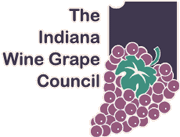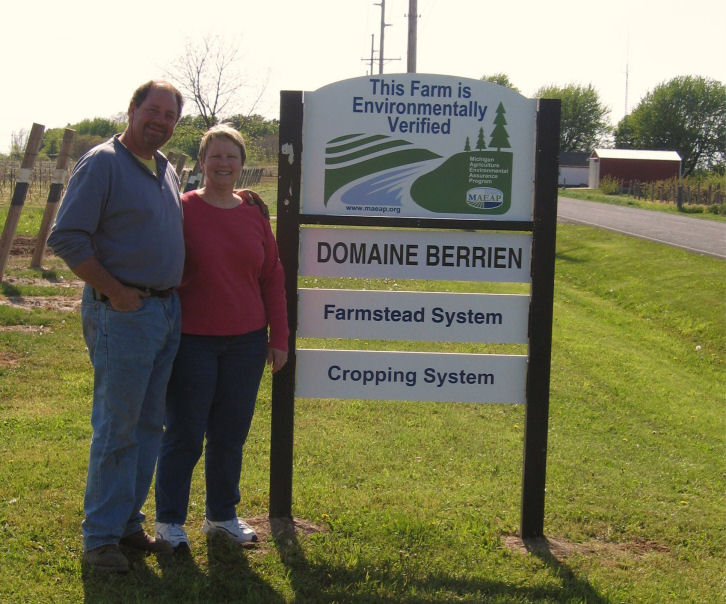Ideas For Bringing Midwest Wine Together
I have now visited over 100 wineries throughout the Midwest. All our Midwest wineries have their own special qualities and I can honestly say that each visit was memorable in its own way.
Looking back at my winery trips, I have been trying to tie them together and, to be honest, it’s difficult. Midwest wineries don’t really have a unifying theme or message. Each state, each wine trail, or in some cases, each winery, is mainly doing it’s own thing.
Establishing a broader image for the Midwest wine industry is a challenging project, especially when there are grapes to be grown, wine to be made and customers to serve. However, is the lack of a cohesive Midwest wine message holding us back?
The Midwest wine industry is fragmented to put it mildly. As an industry with perhaps $500 million in sales (including wine made with grapes from outside the region), we have dozens of different organizations pursuing many important goals, but with little common direction.
To wit, in the 11 state area Midwest Wine Press serves there are:
- 55 wine trails
- 15 state wine associations
- 20 American Viticultural Areas with several more in the works
- 11 state tourism agencies that promote wine tourism in some fashion
- 11 state universities with enology and/or viticulture programs
- 9 state universities or community colleges with VESTA programs
- Dozens of state wine conferences and state wine competitions
From these organizations comes a constant stream of information. The messages are overwhelmingly pertinent and well crafted, but they can be like driving past miles of billboards for the same product.
When consumers are presented with more conflicting messages than they can process, they usually do one of two things: Shut out some or all of the messages or revert to the simplest choice. For many Midwest wine consumers, the simple choice is to reach for a familiar varietal from a major wine producing region far away.
Here are some possible ways for Midwest wine to project a more cohesive message:
1. Merge some state wine organizations. Impossible you say? Please consider that Oregon and Washington are considering merging their marketing efforts because they don’t think either state on its own can make a global impression. (The Oregon wine industry has about $2.7 billion a year in sales and Washington has about $8.6 bilion in annual wine sales.)
Based on my experience, Wisconsin and Minnesota should consider unifying since there’s so much interaction between the two states already. These two states are also producing primarily the same grapes.
Ohio and Michigan could also team up to promote “Great Lakes” Riesling and Pinot clones. Convincing Ontario to join such an effort is probably a bridge too far, but can you imagine the marketing power of all the Great Lakes wineries combined?
2. Each region should select one white and one red that they can grow and produce well and market them heavily. Missouri and Indiana are already well down this path with Norton and Traminette. If different states want to emphasize the same varietal, then marketing efforts should be merged.
3. Establish a traveling Midwest wine consumer event that visits the top markets in the Midwest on a regular schedule. Funds to pay for such an effort would be contributed voluntarily by each state organization that would benefit from being involved. This “road show” could either participate in established wine events, the way other global wine regions do, or we could have our own Midwest wine conventions.
These consumer events would promote both Midwest wine and wine tourism with the goal of getting more exposure in big markets like Chicago, Minneapolis and Indianapolis.
4. Speaking of conventions, there are too many wine trade shows in the Midwest. All of these shows take place during the first quarter of the year and it’s difficult and expensive to attend more than one or two. Most growers and winemakers attend only their home state convention which just adds to the insularity.
I submit that we’d get more bang for our scarce promotional bucks if we merged or rotated some of the regional wine trade shows and put our resources into the aforementioned Midwest consumer wine shows.
After observing the Midwest wine industry carefully for years, I believe that regional wine will be largely dependent on tourists and tasting room sales for the next few years. Getting Midwest wine into retailers and restaurants in a meaningful way will require regional grape production on a larger scale. We need to grow demand for our quality products in an organized way that encourages people to plant vineyards here.
The growth of Midwest wine from virtually nothing 40 years ago to over 1,100 wineries today is an amazing story. Now is the time to take the next step by working together more closely to grow the Midwest wine industry into a nationally and internationally recognized wine producing region.




Mark: I think you are a bit off base here. It is not one big deal in the midwest. The trade shows are in connection wth the state annual get together. Wines differ by AVA and not the state or the reageon. The more wine trails the better. The big problem is the federal laws. Unless you are a big winery you cqn not afford to ship to different states. The requirements to pay taxes in each state subbmit 50 page aplications and post bonds in each state not to mention the dreded monthly report. The other big deal in my mind is the inability to sell to the tourist that comes in from another state unless he is driving Yes you can still take wine in bottles if you check bagage. But you have the way they handle baggage you might have wine stained bags that iss if you dont happen to lose some of the wine during the bag inspections.
We do need to promote the reageon but we need to do that by changing the laws so that all sizes of businesses can participate and small businesses can grow not just the big boys. Thats my two cents worth. have a good day.
Thanks for your comments. Changing federal law seems like a hard way to go, the big distributors are to liquor what Wall Street is to finance: They pay to get their way. Your tourism ideas make sense to me. There should be a Midwest Wine Store in every regional airport. I heard Charlotte airport has a store for NC wines.
Great article Mark. The Midwest could benefit from some common ground thinking.
You touched on a point of interest to me. That is the way the local wines look all piled up together in a supermarket, it is confusing and off putting.
I would like to hear more about your traveling event idea.
Glad you like the column. The Midwest Wine Travel Shows would probably work better as a traveling road show that visits larger midwestern cities. The various states could all participate. Kind of like a consumer skiing or fishing travel exhibition, but for Midwest wine. IF such an event were held during March or April it would get tourists out on the wine trails during a slow period.
I think hammering out what is special about each region is an important thing, and I agree there is not that terribly much unification. To some extent, I think the varieties are similar, but that is only because weather’s hand has been forced on us to unify. I agree with the sentiment that MN and WI have a lot in common and could cross borders on a lot of things, but if you’re going to cross borders on some stuff, the legal issues become ever more important for each state. For example, in WI, you can bring in shiners. In MN, you cannot. For me, personally, I think if a winery brings in shiners, it erodes that entire concept of expressing terrior and regional identity that you’re trying to build. How can you educate your customers on your terrior if you’re simply bringing in Califnoria Cab, not grown locally, not made by your wine maker or anything? I would not care to see shiners come to MN and it would be a hurdle to linking our industries closer together.
Good point about bringing in finished bottles of outside wine. “Shiners” do nothing to grow the Midwest wine industry.
Cooperating across state lines on marketing efforts would help to grow demand, but navigating the patchwork of state regs will be a challenge. As we have reported in MWP, Wisconsin is one the worst states for wine producers in the Midwest.
Honestly I think one of the best solutions for the market as a whole would be to establish and adopt a ranking system like Parker’s. Ranking/ scoring wines has been shown to increase consumer confidence and increased consumer confidence leads to increased consumer enjoyment. Only ranking wines that were produced east of the Rockies and only from appellations east of the Rockies would eliminate the influence of grapes shipped in from California or elsewhere and help promote native (American, New world, hybrid ect.) cultivars. Of course there are quite a few viniferas east of the Rockies, but still not as many as there are American cultivars that are made into outstanding wines in their own right.
James,
Good idea to rank wines from Eastern producers. To take the subjectivity out of the rankings, using a panel of tasters and averaging the results would be ideal. The logistics to this approach are daunting however. As for Parker, I mainly don’t like the wines he likes. His “ratings” promote a primarily California style of winemaking. Midwest wine ratings would need to be for everyone.